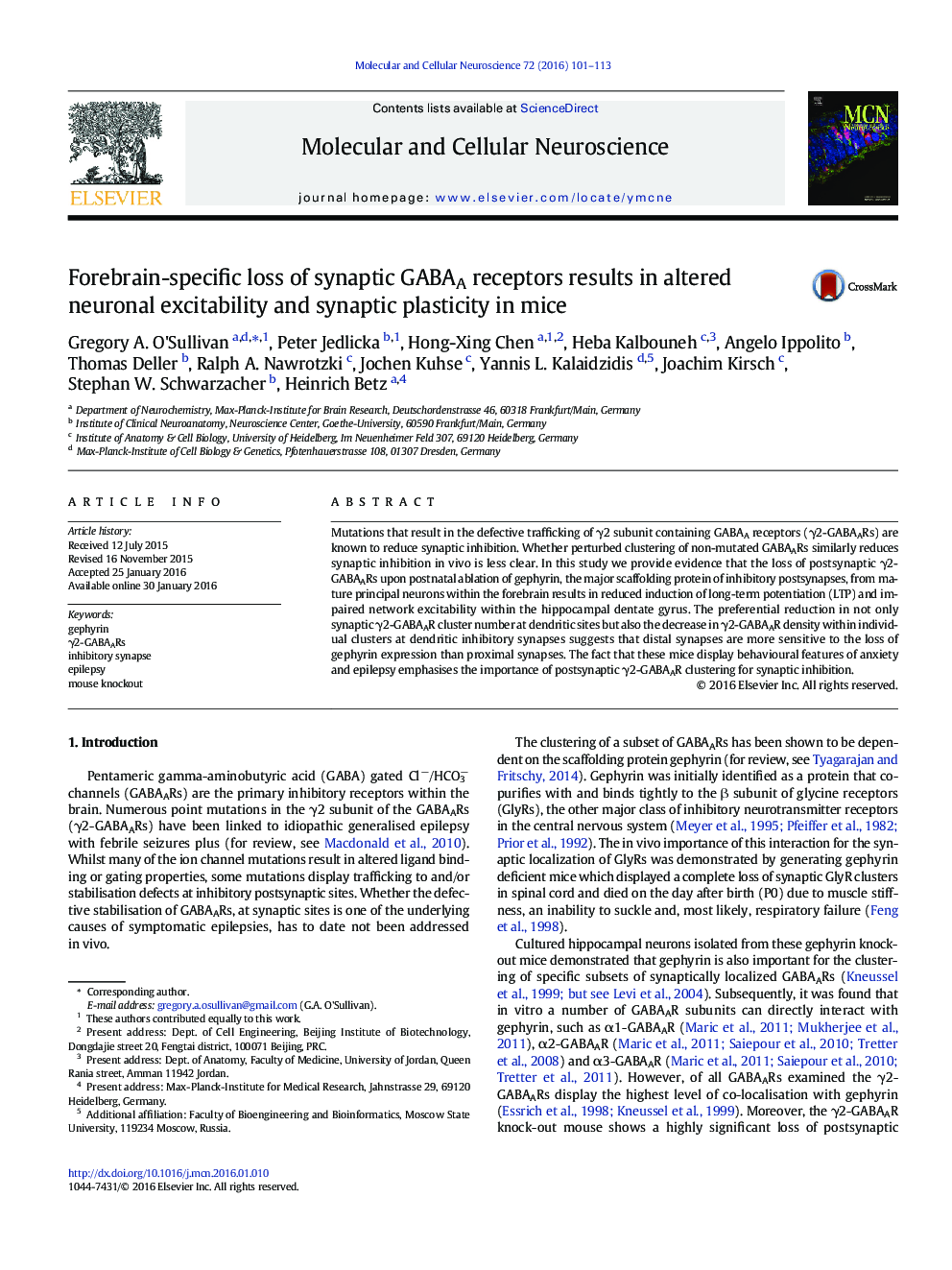| Article ID | Journal | Published Year | Pages | File Type |
|---|---|---|---|---|
| 2198427 | Molecular and Cellular Neuroscience | 2016 | 13 Pages |
•Ablation of gephyrin reduces LTP and network excitability in the dentate gyrus.•Distal γ2-GABAAR + synapses are more sensitive to gephyrin loss than proximal synapses.•Conditional loss of gephyrin clustering produces mice with anxiety and epilepsy features.
Mutations that result in the defective trafficking of γ2 subunit containing GABAA receptors (γ2-GABAARs) are known to reduce synaptic inhibition. Whether perturbed clustering of non-mutated GABAARs similarly reduces synaptic inhibition in vivo is less clear. In this study we provide evidence that the loss of postsynaptic γ2-GABAARs upon postnatal ablation of gephyrin, the major scaffolding protein of inhibitory postsynapses, from mature principal neurons within the forebrain results in reduced induction of long-term potentiation (LTP) and impaired network excitability within the hippocampal dentate gyrus. The preferential reduction in not only synaptic γ2-GABAAR cluster number at dendritic sites but also the decrease in γ2-GABAAR density within individual clusters at dendritic inhibitory synapses suggests that distal synapses are more sensitive to the loss of gephyrin expression than proximal synapses. The fact that these mice display behavioural features of anxiety and epilepsy emphasises the importance of postsynaptic γ2-GABAAR clustering for synaptic inhibition.
